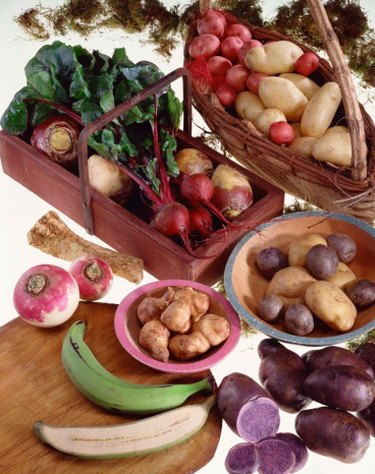
Turnips and rutabagas belong to the same family, and have many similarities; in fact, rutabagas were developed by crossing turnips with cabbages. However, turnips and rutabagas differ slightly in appearance, in cultivation and in their preparation and use as food. Many of these differences, such as different growing times, different spacing in the garden and different appearance of both the plant and the root, reflect the rutabaga's larger size.
Family
Video of the Day
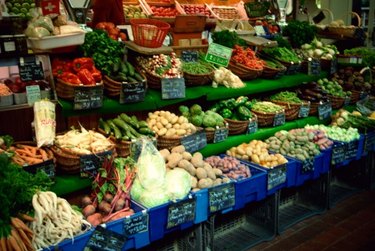
Both turnips and rutabagas are root vegetables, and both belong to the genus Brassica, in the Cruciferae or mustard family. Turnips grow wild in some parts of the world, particularly Siberia, and have been eaten since prehistoric times. Rutabagas are a cross between the turnip and the cabbage. Like most root vegetables, both turnips and rutabagas are cool-season crops, and both come in several varieties.
Video of the Day
Appearance
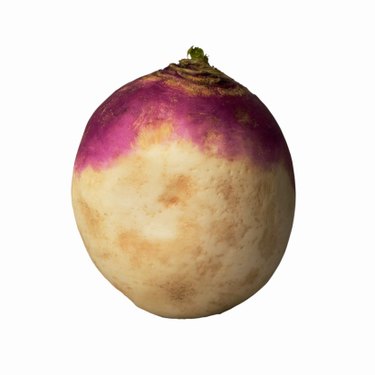
Both the growing plants, and the root you buy in a store and eat, look similar in many ways, but a few important differences make it easy to tell turnips and rutabagas apart. Turnip plants have thin, slightly hairy leaves, while the leaves of the rutabaga plant are thicker and smoother. The edible root of the rutabaga (the part you buy in the store and eat) is larger, rounder and firmer than the turnip. Turnips should be harvested and eaten when they are 2 to 3 inches in diameter; rutabagas are mature at 3 to 5 inches in diameter.
Growing Conditions and Practices
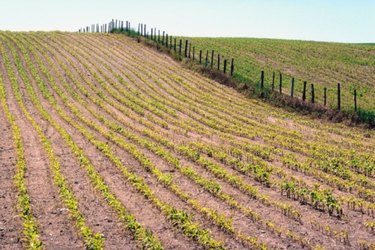
Both rutabagas and turnips grow best in cool conditions, and are "cool season," or fall and spring crops. Both are relatively easy to plant and cultivate, but the larger rutabaga needs longer to grow, and must be planted three to four weeks earlier than the turnip. Also, rutabaga seedlings must be thinned to 6 inches apart when they are 2 inches tall, while turnips should be thinned to 2 to 4 inches apart when they are 4 inches tall.
Textures and Flavors
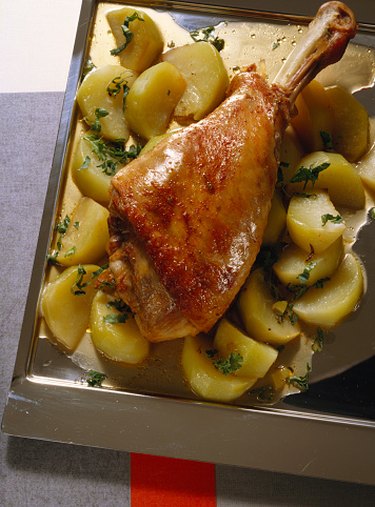
Turnips and rutabagas have similar textures and flavors. They can be used interchangeably in most recipes. They can be cooked in many different ways, but are perhaps most familiar served mashed. Like potatoes, parsnips and other root vegetables, both turnips and rutabagas have a mild, bland flavor. This can be unappealing when tasted plain, but it means that a little butter, salt and pepper is enough to bring out the delicate flavors of both vegetables. It also means that they absorb and complement the flavors of spices, herbs, meats and other vegetables when cooked or served together.
Turnips are grown for their greens as well as for their roots. Indeed, some varieties are bred and grown exclusively for greens. Rutabaga greens are edible, but they are rarely eaten in the United States, and are difficult to obtain unless you grow your own. Similarly, turnips are often served raw -- sliced, diced or grated for salads. Rutabagas, too, can be eaten raw, but again this is rare, and they are usually served cooked.